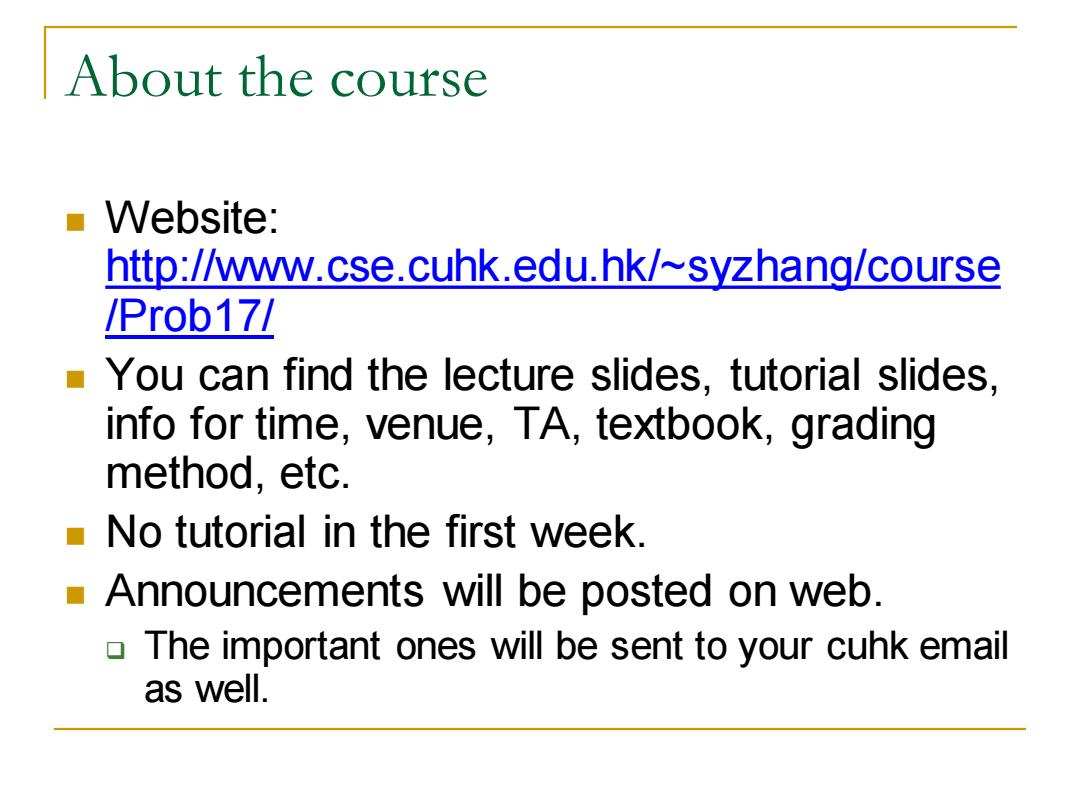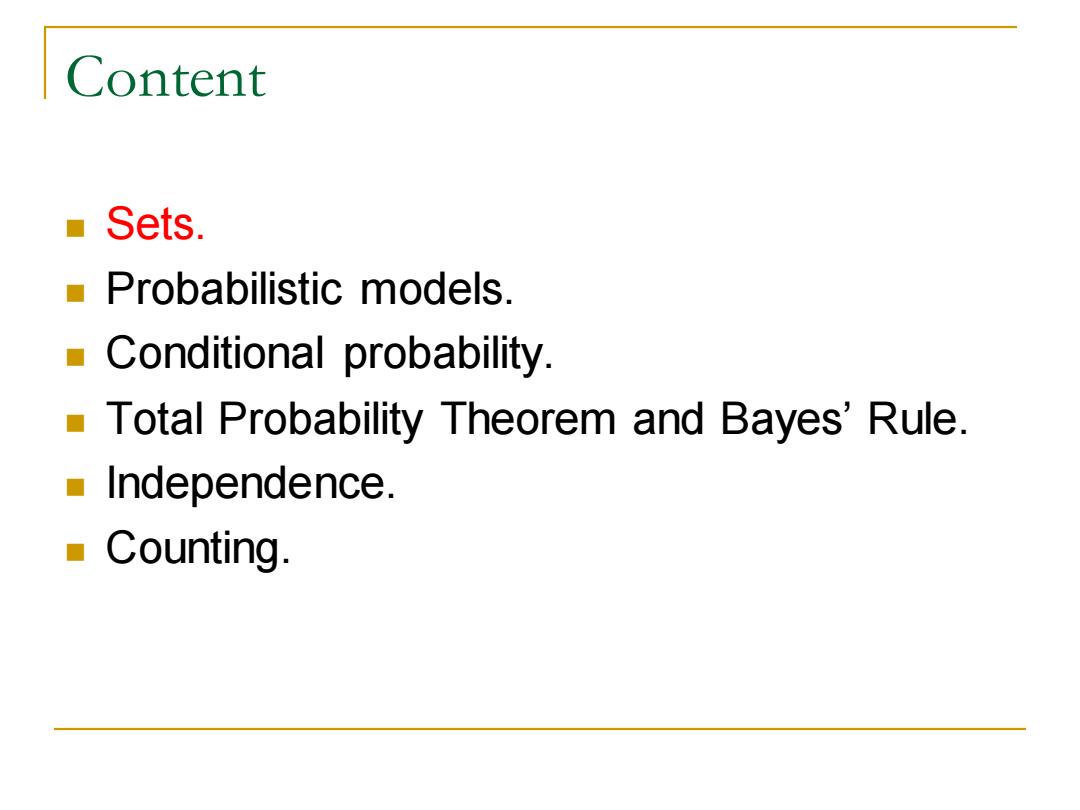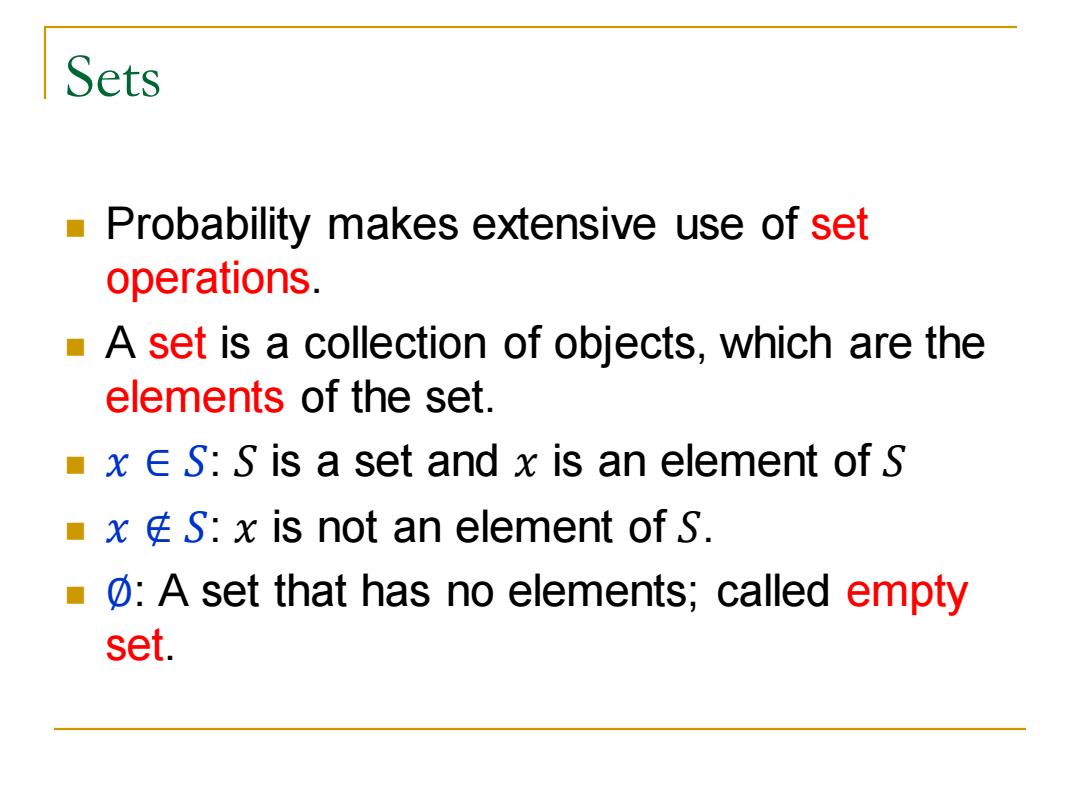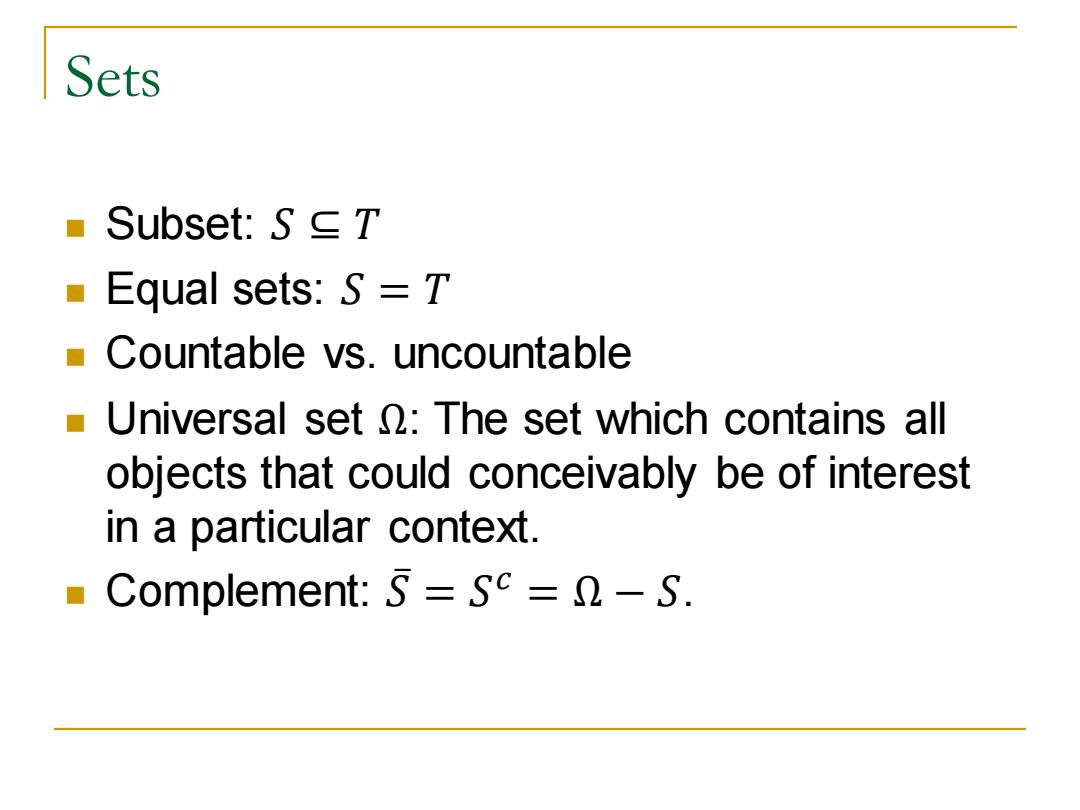
ENGG40Probataistisfor Chapter 1:Sample space and probabilty Instructor:Shengyu Zhang
Instructor: Shengyu Zhang

About the course Website: http://www.cse.cuhk.edu.hk/~syzhang/course /Prob17/ You can find the lecture slides,tutorial slides, info for time,venue,TA,textbook,grading method,etc. No tutorial in the first week. Announcements will be posted on web. The important ones will be sent to your cuhk email as well
About the course ◼ Website: http://www.cse.cuhk.edu.hk/~syzhang/course /Prob17/ ◼ You can find the lecture slides, tutorial slides, info for time, venue, TA, textbook, grading method, etc. ◼ No tutorial in the first week. ◼ Announcements will be posted on web. ❑ The important ones will be sent to your cuhk email as well

Content Sets. Probabilistic models. Conditional probability. Total Probability Theorem and Bayes'Rule. Independence. Counting
Content ◼ Sets. ◼ Probabilistic models. ◼ Conditional probability. ◼ Total Probability Theorem and Bayes’ Rule. ◼ Independence. ◼ Counting

Sets Probability makes extensive use of set operations. A set is a collection of objects,which are the elements of the set. x E S:S is a set and x is an element of S xS:x is not an element of S. ■ 0:A set that has no elements;called empty set
Sets ◼ Probability makes extensive use of set operations. ◼ A set is a collection of objects, which are the elements of the set. ◼ 𝑥 ∈ 𝑆: 𝑆 is a set and 𝑥 is an element of 𝑆 ◼ 𝑥 ∉ 𝑆: 𝑥 is not an element of 𝑆. ◼ ∅: A set that has no elements; called empty set

Sets Subset:S C T ■Equal sets:S=T Countable vs.uncountable Universal set N:The set which contains all objects that could conceivably be of interest in a particular context. Complement:S=Sc=2-S
Sets ◼ Subset: 𝑆 ⊆ 𝑇 ◼ Equal sets: 𝑆 = 𝑇 ◼ Countable vs. uncountable ◼ Universal set Ω: The set which contains all objects that could conceivably be of interest in a particular context. ◼ Complement: 𝑆ҧ= 𝑆 𝑐 = Ω − 𝑆